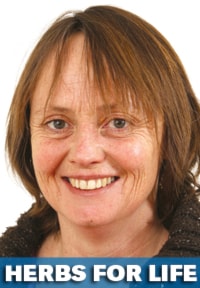Recently we arrived home from The Montana Herb Gathering.
It was a funtastic weekend! A reunion of old and new friends who love plant medicine so much they are willing to travel to a remote corner of Montana, down a twisting bed of rocks, more like a river bottom than a road to participate in workshops about plant medicine, hike through fir forests counting petals on flowers and touch their hairy stems, dance under stars, drinking mead and hawthorn wine.
We took winding Hwy 89 through Northern Montana, skirting Glacier National Park.
Last summer we travelled to Waterton National Park on our side of the boarder in late June to see the elusive plant beargrass (Xerophyllum tenax).
Waterton is the only place in Canada where beargrass lives. It was unfortunately, a cold spring last year (but isn’t it always a cold spring?) and the beargrass was not yet in flower.
Driving along the side of a mountain where a forest fire had rage a few years ago, I spied beargrass amongst the three foot pines and leafy stalks of fireweed. “Stop,” I yelled over Bob Dylan rambling on about a broken heart.
My husband braked, pulled over and we crawled out of the car, cameras ready.
The torch like stems of Beargrass flowered all over the chard mountain side.
I had never imaged seeing so much bear grass in flower in any one place. It is a rare occurrence for so many plants to blossom alongside each other.
Beargrass blooms every seven years. It was a pleasure to take in the sweet vanilla scent of its creamy white flowers.
As far as I know, beargrass is not a medicinal plant.
But it is a useful plant. First Nations make baskets and hats with its grass like leaves and roots.
At the gathering, I learned to make both cedar bark and ponderosa pine baskets.
Herbalists need several baskets of different shapes and sizes.
Baskets with straps like a purse protect plants from being bruised when gathered in the wild.
These baskets are essential when foraging for mushrooms. One the other hand, loosely woven circular baskets are useful for drying herbs, such as red clover flowers (Trifolium repens).
The same herbalist who taught basket making demonstrated fire starting as well. He was quite a resourceful fellow. From two sticks, a bow and collection of bark and bulrush fluff which looked like a bird’s nest, he created a fire.
As someone who has always used a lighter to start fires, it was a supernatural event to witness.
I still can hardly believe my eyes. He became the hero to the little boys at the gathering; they followed him everywhere, trying to start their own fires.
At the gathering there were many children. A Cheyenne elder and herbalist taught the children how to make dolls.
He took us grown-ups on a herb walk to explain harvesting plants with the intention for healing. He talked long on different male and female plants. Female plants grow in clusters.
“Like women,” he said, “they love to talk.”
The male plants grew on there own. “They prefer silence and don’t like to be asked what they are thinking,” he laughed. He advised to young women who are looking for a husband to wear a bee balm (Monarda spp) in their hair.
He claims it is love medicine.
A herbalist from North Carolina taught a workshop on using herbs for sexual vitality.
It was a packed class.
He gave us two love potions formulas. One made with chocolate, damiana (Turnera diffusa) and rose petals he uses to warm up relationships.
In the other love potion called Into the Heat, he used a herb from Brazil and advised caution on its indiscriminate use.
It was my first time teaching at the gathering, so I was not able to take in as many workshops as I would have liked such as Food as Medicine, Herbal Wine Making and Herbs for Chronic Pain.
But I did learn from those who took part in the workshops I presented.
One more time, I was taught that plants, whether flowering in the garden, mixed in a tasty salad, growing wild on a mountain side, steeped in a cup of tea will, if one pauses for a moment, create happiness.
Herbs for Life is written by Abrah Arneson, a local clinical herbalist. It is intended for information purposes only. Readers with a specific medical problem should consult a doctor. For more information, visit www.abraherbalist.ca. Arneson can be reached at abrah@shaw.ca
